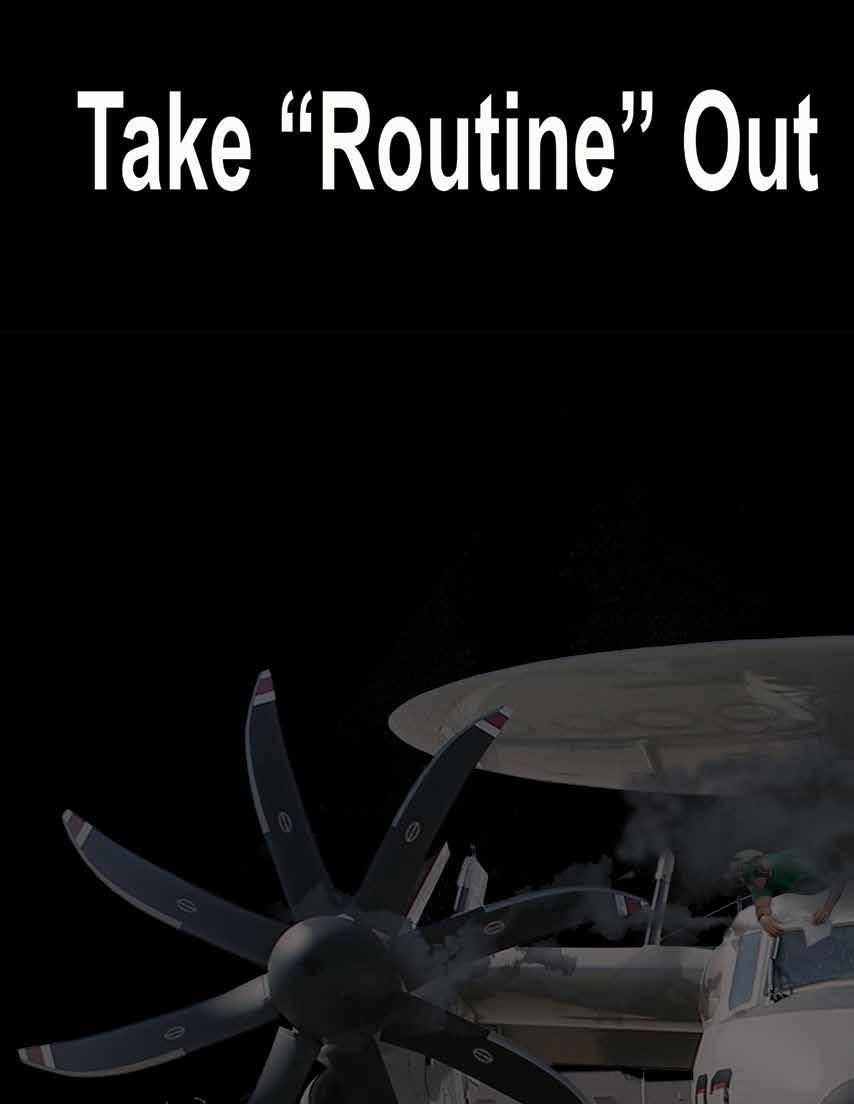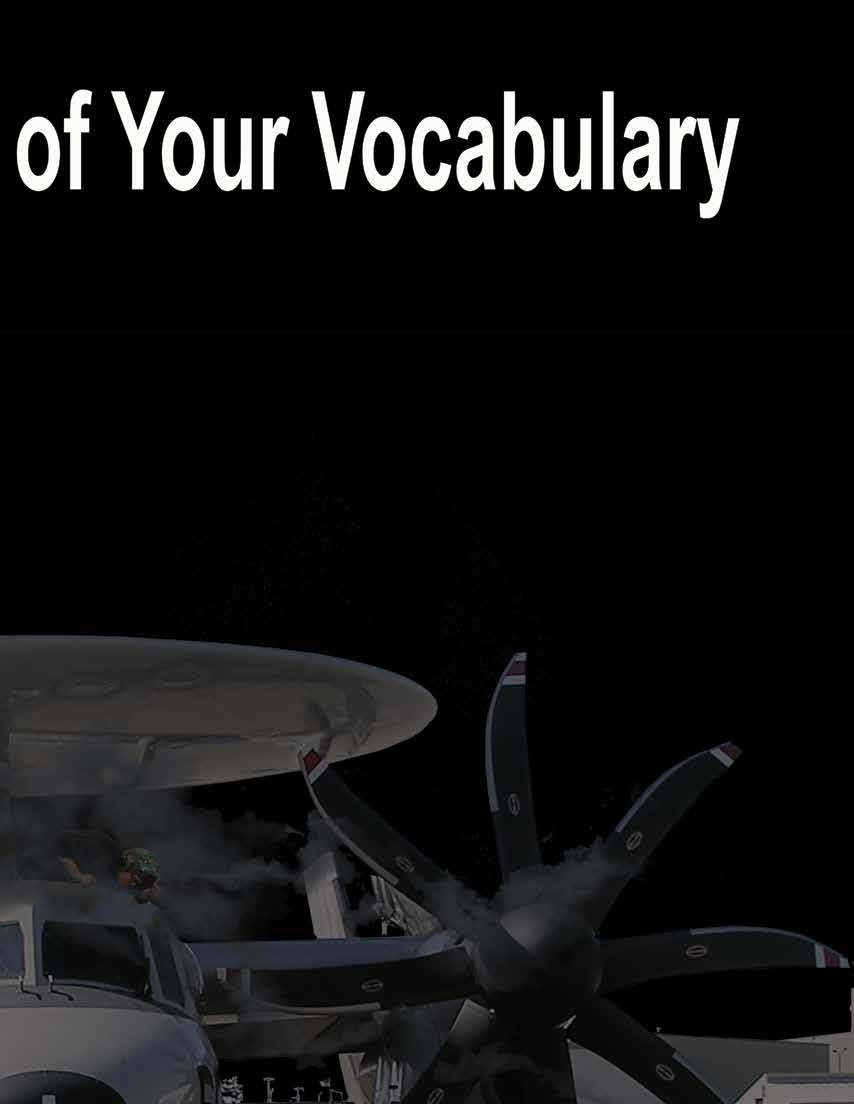
6 minute read
A Slippery Slope
By AMAN Mary Costello
Iwas underway on my first deployment as an
Advertisement
18-year old airman when I learned a personal lesson about Operational Risk Management (ORM).
I was attached to Strike Fighter Squadron 113’s Line Division on board USS Carl Vinson (CVN-70) during a Western Pacific deployment. As an airman in a Hornet squadron, I am responsible for general maintenance on the aircraft, such as cleaning, performing daily turnarounds, and preparing the aircraft for launch. I had only been in the squadron for two months and was diligently working on my qualifications during the night shift. Working on and around aircraft had been a foreign environment to me, and I was still getting acclimated.
One day in mid-December, the ship was somewhere in the western Pacific. At 02200, my supervisor told me to hand wipe the nose of aircraft 307 in the hangar bay. I’d never cleaned the nose of an aircraft before and decided to ask a friend in the Ordnance Division how to get onto the nose of the aircraft.
Navy photo by MC3 Jacob Milner Illustration by John Williams
He told me to climb up the aircraft’s ladder on the port side of the aircraft, walk aft on the leading edge extension (LEX) to the back of the aircraft, cross over to the starboard side, and position myself on the front end of the starboard LEX (the front edge of the LEXs do not have non-skid). Then I had to climb onto the nose, sit facing forward, and slide down the nose to the area being cleaned.
The aircraft’s nose is about 10 feet above the deck, and there was nothing to hold on to while I was cleaning the nose. It seemed simple, and I followed his instructions to the letter. As I finished, I tried to shimmy back up the aircraft to the canopy where I could grab the canopy bow and pull myself up to a point where I could place my feet on the starboard LEX.
It all went black. When I woke up, I was on the hangar bay floor, and a few squadron mates were asking me if I was OK. I had fallen as I was working my way up the nose of the aircraft. I had bounced off an ordnance rack parked next to the aircraft, hit the deck and rolled underneath a T-15 jenny next to the aircraft. I was rushed to medical, having suffered a lot of bumps and bruises, as well as a major concussion. I stayed at medical for the next 24 hours to undergo standard post-concussion procedures.

Personal protective equipment (PPE) saved my life. If I hadn’t been wearing my cranial, my injuries could have been much worse—even fatal.
I hadn’t done so well with my ORM. I missed the first step (Identify Hazards) in the 5-step process, which sent the entire evolution down the wrong road. First, the environment was different than what I was used to. My squadron is stationed at NAS Lemoore, Calif., where the weather is dry. Working on the ship in the western Pacific presents a completely different environment. The humid air makes all surfaces extremely slippery, and I did not recognize this hazard.
Second, I’d been trying to do a balancing act, 10 feet above the deck without anything to hold on to. A ladder or stand would have been the appropriate controls to apply.
As a young airman, I’m still learning. When I don’t know something, I ask the question. However, when I get an answer to a question, I need to do a sanity check. If it doesn’t look, smell, or feel right, then I should have asked another (and sometime more important) question: “Why?” I need to remember that when it comes to safety, there is no rank.
Aircraft Structural Mechanic Costello works in the Line Division at BFA-113
By LT Andy Tabellion

Calling a task “routine” is a quick way to let your guard down. The Seahawks of VAW-126 recently experienced how rapidly a situation can degrade when smoke started to rapidly fill the cockpit during a low power engine turn. As usual, a low power turn brief was executed in Maintenance Control with all the personnel involved in the evolution. Although not unusual for a Hawkeye squadron, the low power turn was taking place at night so the aircraft would be ready for the next day’s flight schedule. The turn crew briefed the proper night hand signals and AE1, who was working on his turn operator qualification and was performing the turn, and AD2, the turn operator qualified instructor, briefed and reviewed all the emergency NATOPS procedures.
As the turn operators were walking to the aircraft, AE1 commented, “You’d never think that you would ever actually have to perform one of those emergency procedures.” What he did not know at the time, was that he was soon going to be at the controls for his first actual aircraft emergency. The evolution continued normally as the port engine was started successfully and brought into reverse thrust to reduce the propeller wash around the nacelle and allow the maintainers to check the engine for bleed air, oil, and hydraulic leaks. However, from this point on the evolution quickly started to change directions and AE1 and AD2 started to realize it was no longer going to be just a “routine” low power engine turn.
AE1 and AD2 began to smell and see smoke rapidly entering the cockpit from the air vents in the foot well. AE1 started executing the emergency NATOPS procedures by quickly scanning the engine instruments, which were all in the normal range, and securing the air conditioning system. Meanwhile AD2 was trying to signal the fire to the plane captain from inside the cockpit; however, the reduced visibility at night combined with the smoke in the cockpit made it impossible for the plane
captain to see what was happening in the cockpit. Still unable to communicate with the plane captain, AD2 opened the copilot’s overhead ditching hatch and gave the fire signal from outside. The plane captain acknowledged the signal about the same time the engine was secured, barely having time to react. Although the source of the smoke had been secured when the air conditioning switch was placed to off, AE1 and AD2 did not know at the time if there was a fire in the aircraft and emergency egressed through their respective cockpit overhead ditching hatches. As you can imagine, seeing two turn operators emergency egress out the top of the aircraft quickly grabbed the attention of everyone on the line thus changing the entire mindset of the evolution. Outside the aircraft PRAN, who was manning the fire bottle, uncoiled the hose and was ready to go before they even made it out of the aircraft. He quickly realized it was not an engine

fire and that the fire bottle would be useless, and instinctively ran towards the front of the aircraft and removed the liquid oxygen bottle. As the rest of the ground crew helped AE1 and AD2 get clear of the aircraft, the flight deck coordinator notified maintenance control and ensured everyone was moving safely away from it. This incident highlighted many important learning points to the entire SEAHAWK team, most importantly how quickly a situation can degrade and the importance of not accepting a “routine” mindset. The adaptability, quick thinking, and proper execution of emergency procedures allowed the entire maintenance turn crew to effectively handle the aircraft emergency and prevent further damage while keeping everyone involved safe. If anything will remain a “routine” part of daily operations in VAW-126, it will be the command climate that promotes thorough systems knowledge, and adherence to established safety postures, procedures, and maintenance briefs.
LT Tabellion is the Aircraft Division Officer at VAW-126










